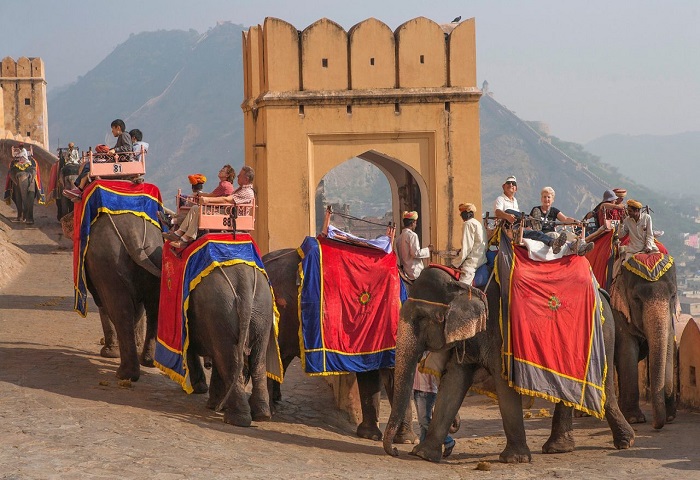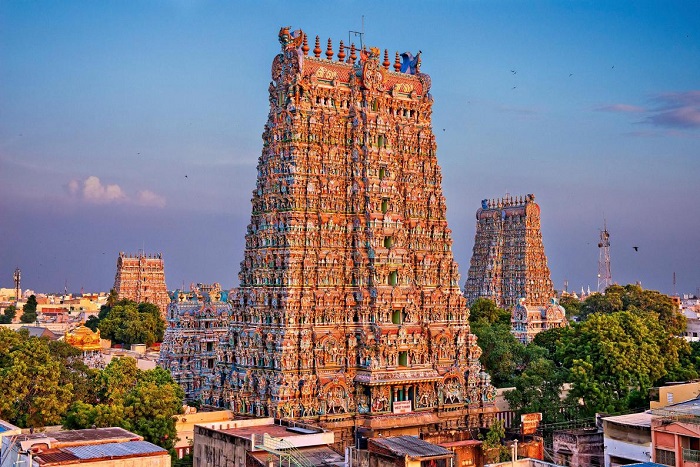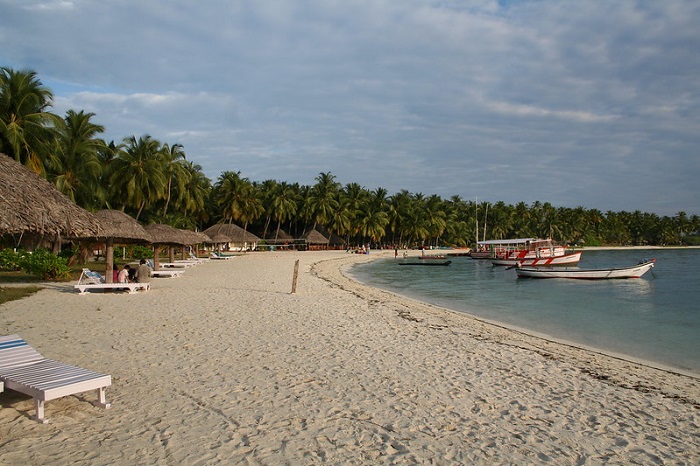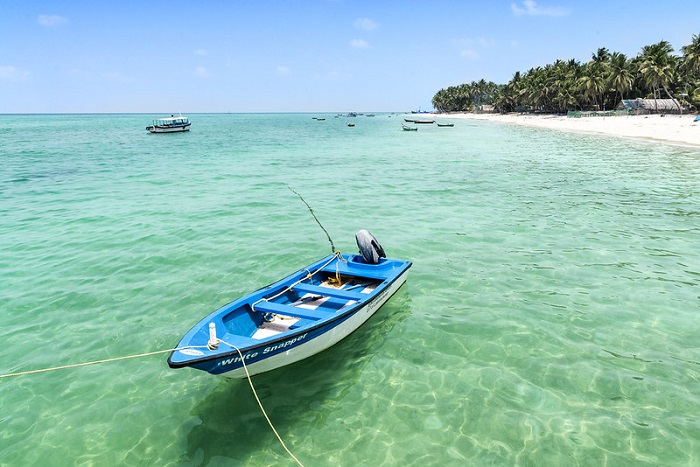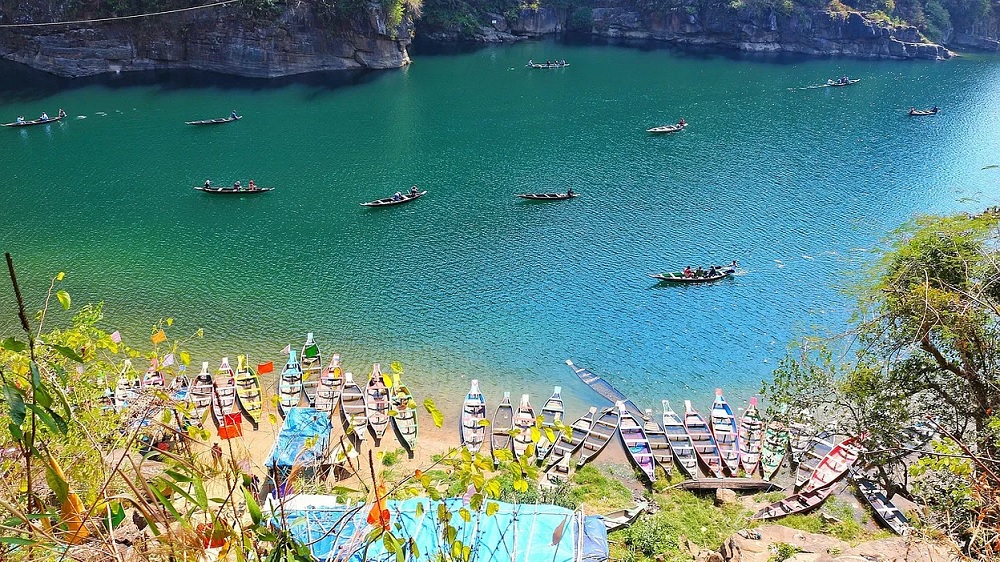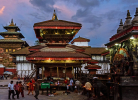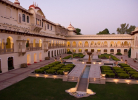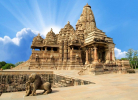New Seven Wonders of the World
The "new 7 wonders of the world" was a campaign to choose the new Seven Wonders of the World. It was organized by the New 7 wonders Foundation in 2000 with a poll led by Bernard Weber.The selection was done from the list of 200 existing monuments in the world.
List of New Seven Wonders of the World
1. Machu Picchu
Machu Picchu is an Inca citadel in Eastern Cordillera of Southern Peru. It spreads over an area of a 2,430-metre mountain ridge. Often referred to as the “lost city of the Incans”, this granite built monument is built in classicalInca style, with polished dry-stone walls perched between 2 towering Andean peaks. Three primary structures of the monument, which are also the main tourist attractions are the Intihuatana, the Temple of the Sun, and the Room of the Three Windows.
The temple is a semicircular temple built on the same rock overlying "Royal Mausoleum" similar to the Temple of the Sun found in Cusco and the Temple of the Sun found in Pisac. The Incas built the estate in the 15th century but abandoned it later at the time of the Spanish conquest. It remained unknown to the outside world until American historian and archeologist Hiram Bingham rediscovered it in 1911.
2. Petra — Jordan
Petra is a city in southern Jordan with great historical and archeological significance. Also popular as Raqmu, it lies on the slope of Jabalal-Madbah in a natural depression among the mountains. It is believed to be established in the 4th century BC as the capital city of the Nabataean Kingdom. Petra is also known as the rose city as it consists of hand-hewn caves, temples, and tombs, which are carved out of blushing pink sandstone.
Petra was once used to be the most prominent city of the Nabateans (a nomadic desert tribe)as it linked camel caravans between the Mediterranean and Arabian Seas.Due to the Nabatean’s huge investments, Petra grew into a major trade hub. In 106 Petra fell to the Romans, who annexed Nabataea and renamed the monument as Arabia Petraea.
The Galilee earthquake of 363 destroyed many structures in the monument. It completely remained unknown to the world until it was rediscovered by Johann Ludwig Burckhardt in 1812. In Petra visitors can explore Bab As-Siq, Siq, The Treasury, Street of Facades, the royal tombs, the Colonnaded Street, The Great Temple and many more.
3. Taj Mahal
Taj Mahal is located in the city of Agra in North India. The construction of the monument began under the reign of Shah Jahan in 1632 as a tribute to his favorite wife Mumtaz Mahal after her death. It was built to house her tomb. The monument consists of a central tomb surrounded by four minarets. The construction of the mausoleum was completed in 1643 but other works continued till another 10 years.
The Taj Mahal incorporates the designs of Persian and Mughal architecture. Roughly 20,000 craftsmen and artisans worked on its construction, which include calligraphers from Syria and Persia, stone carvers from Bukhara, stone-cutters from Baluchistan, and mosaicists from Southern India. The exterior and interior decorations are a true reflection of their mastery in the art.
Visitors can take a guided or self-guided tour throughout the Taj Mahal and click memorable pictures. Located in the same complex is the Taj Mahal Garden, which is a great place for indulging in a little nature-walk.
Suggested Taj Mahal Tours:
- 4 Days - Delhi Agra Jaipur Tour
- 5 Days - Exclusive Taj Mahal Tour
- 7 Days - Taj Mahal Tour with Khajuraho
- 8 Days - Taj Mahal Tours with Gwalior
- 10 Days - Taj Mahal with Tigers
- 11 Days - Taj Mahal with Kathmandu
4. The Great Wall of China
The popular Great Wall of China is an ancient series of walls and fortification systems built across the northern borders of China. The primary aim behind building the wall was to protect territories of Chinese states against various nomadic groups of the steppe and their polities.
The construction of walls began nearly in the 7th century BC by ancient Chinese states. In 220-206 BC additional stretches were joined by the first Emperor of China. Later on, multiple stretches of border walls were built by successive dynasties including the Ming Dynasty from 1368–1644.It was originally built from rammed earth, stones, and wood. During the Ming’s era, bricks were heavily used in many areas of the wall along with tiles, lime, and stone.
For visitors, camping and hiking are once in a lifetime experience on the Great Wall. People also take part in large numbers in the annual Huangyaguan Great Wall Marathon and the Roller Coaster Cart.
5. Chichén Itzá
Chichen Itzais located in the Tinúm Municipality of Mexico, which was originally a Pre-Columbian city built by the Maya people of the Terminal Classic period. The site is a composition of different architectural styles, namely central Mexico and Puuc and Chenes styles of the Northern Maya lowlands. The presence of various styles is seen as due to the result of cultural diffusion.
In about 600 AD. Chichen Itza started gaining importance in the region and remained as a powerful capital between 900 and 1050 AD controlling northern and central Yucatan at the time.
A visit to the Chichén Itzá gives the visitors a chance to explore El Castillo, Juego de Pelota (Main Ball Court), The North Temple, Temple of Jaguars, Tzompantli (Temple of the Skulls), Sacred Cenote, Temple of the Warriors and more.
6. Christ the Redeemer Statue
Christ the Redeemer of Rio de Janeiro is an Art Deco statue of Jesus Christ located at the peak of Corcovado Mountain in the Tijuca Forest created by French sculptor Paul Landowski. It was Constructed between 1922 and 1931 by a Brazilian engineer Heitor da Silva Costa in collaboration with the French engineer Albert Caquot. The face was designed by Romanian sculptor Gheorghe Leonida. It is constructed with reinforced concrete and soapstone.
The statue is 30 metershigh excluding the 8-meter pedestal. The arms stretch to a 28 meters width. The weight of the statue is 635 metric tons. The statute was built as a symbol of Christianity across the world.It has now become a cultural icon of both Rio de Janeiro and Brazil.
One needs to catch the train and a bus/taxi to get to the statue. Adventurous junkies could also opt the option hiking through the trail from the lake near to ParqueLage that leads to the top of the mountain. The view of the city from the peak of the mountain is sure toawestruck your senses.
7. The Roman Colosseum
The Roman Colosseum is an amphitheater located at the heart of the beautiful city of Rome, which is popular throughout the world. The construction of the amphitheater began in the era of emperor Vespasian in AD 72, which was completed in AD 80 under his successor and heir, Titus. It followed several modifications during the reign of Domitian in 81–96 AD. Since these three emperors belong to the Flavian Dynasty theColosseum was also named as “the Flavian Amphitheatre”.
The amphitheater can accommodate an average of 65000 spectators at a time and was listed as the most popular tourist attraction in the world in 2018.
Visitors can take a complete guided tour of the Colosseum exploring the 1st and 2nd floor. A Walk through the Gladiator's entrance into the Colosseum onto the partially reconstructed Arena floor is a must. One must also not miss the chance to visit the Forum and Palatine Hill located nearby.


